You’d be more likely to find the Navajo-hued stucco building where John and Jen Vitale reside along a Mediterranean coast than in the Oregon city of Portland. Step inside and you’ll find the dark wood paneling, architectural charm, and attention to detail that the Pacific Northwest is rife with. Filled with plants, records, books, natural objects and a copious collection of kitchen items, the Vitale’s home exudes sensitivity to the simple and quotidian pleasures of life. Lining the hallway of their second floor walk-up is John’s cache of skate shoes — the only prominent indication that he makes a living owning and operating a skateboard company. His workshop and office hide in the building’s basement, but the apartment is far from the frenzied pace you might expect from a life-long skateboarder. Instead, the Vitale’s home serves as gallery and sanctuary, inviting guests into the quiet calm, that Jen — a freelance stylist — and John have fashioned from both created and amassed treasures.
Hailing from Northern California and Georgia, respectively, Jen and John have recently found Portland to be an ideal locale for their little family that also includes their yellow Labrador retriever, Sammy, who they claim to be their “first child.” True to their coastal-hippie and Southern origins, the couple are laid-back, love laughing, and are quick to make guests feel impossibly at ease.
This story is featured in our second book, Freunde von Freunden: Friends, order within Germany here, or find the book internationally at selected retailers.
This portrait is part of our ongoing collaboration with ZEIT Online who present a special curation of our pictures on their site.




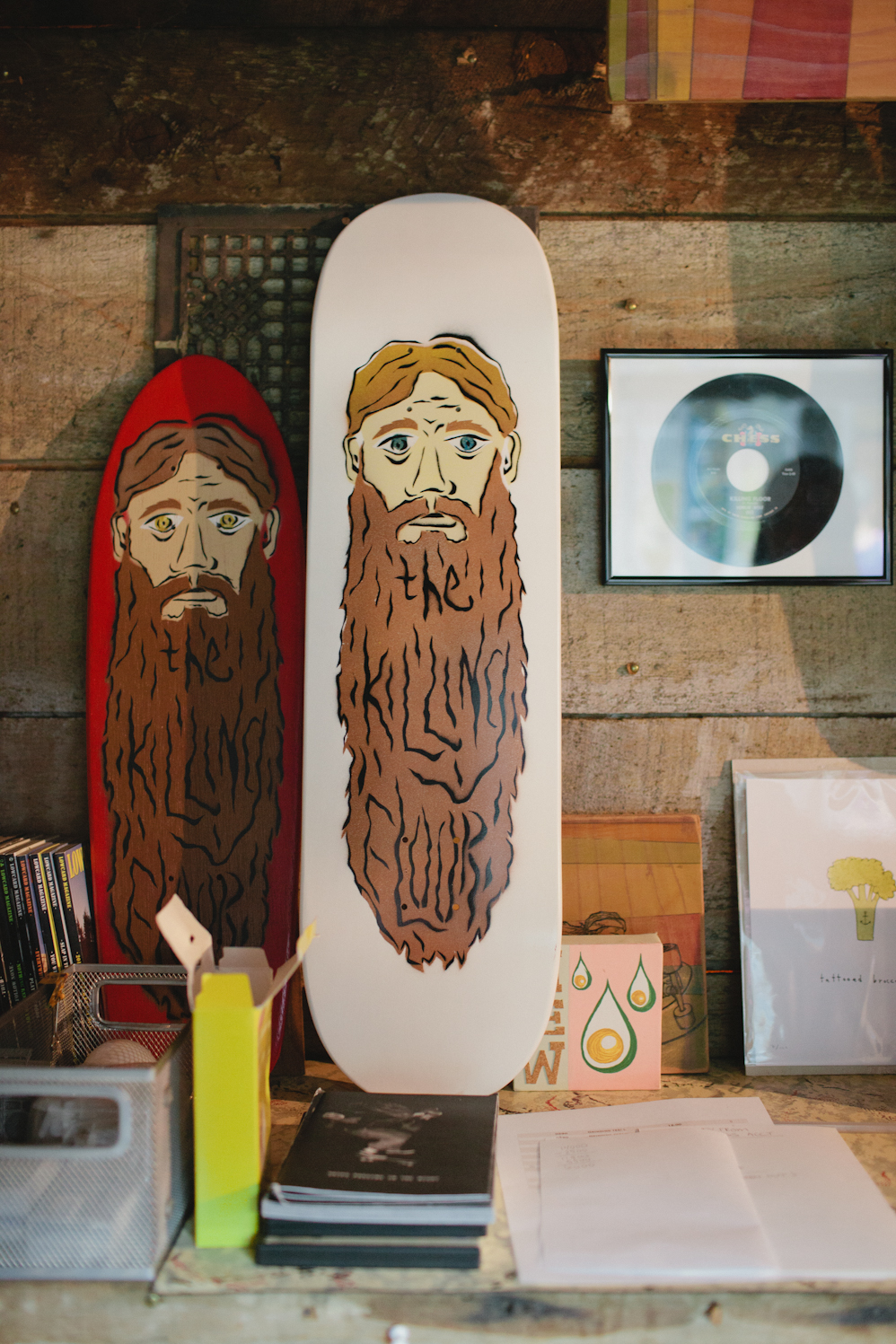





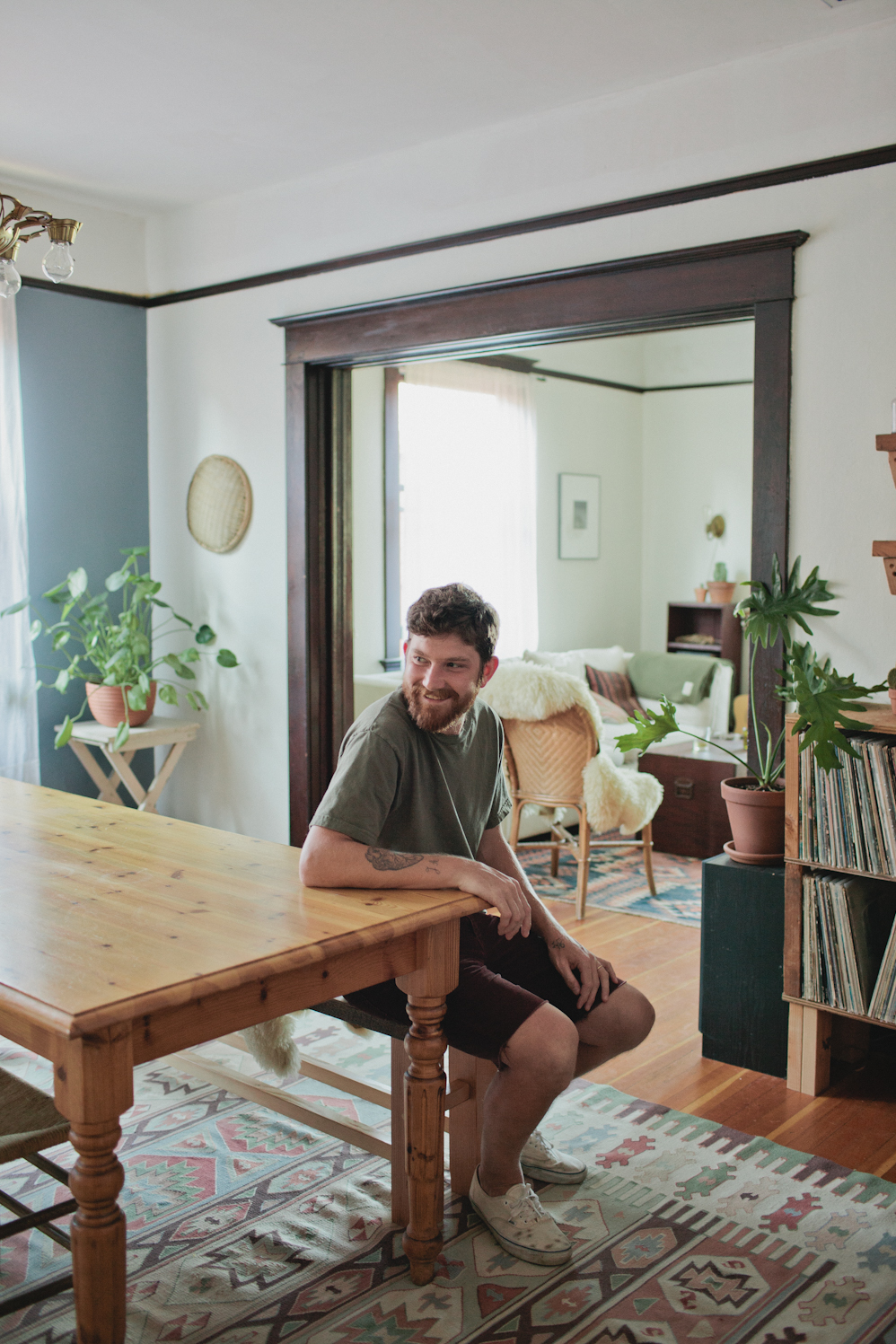


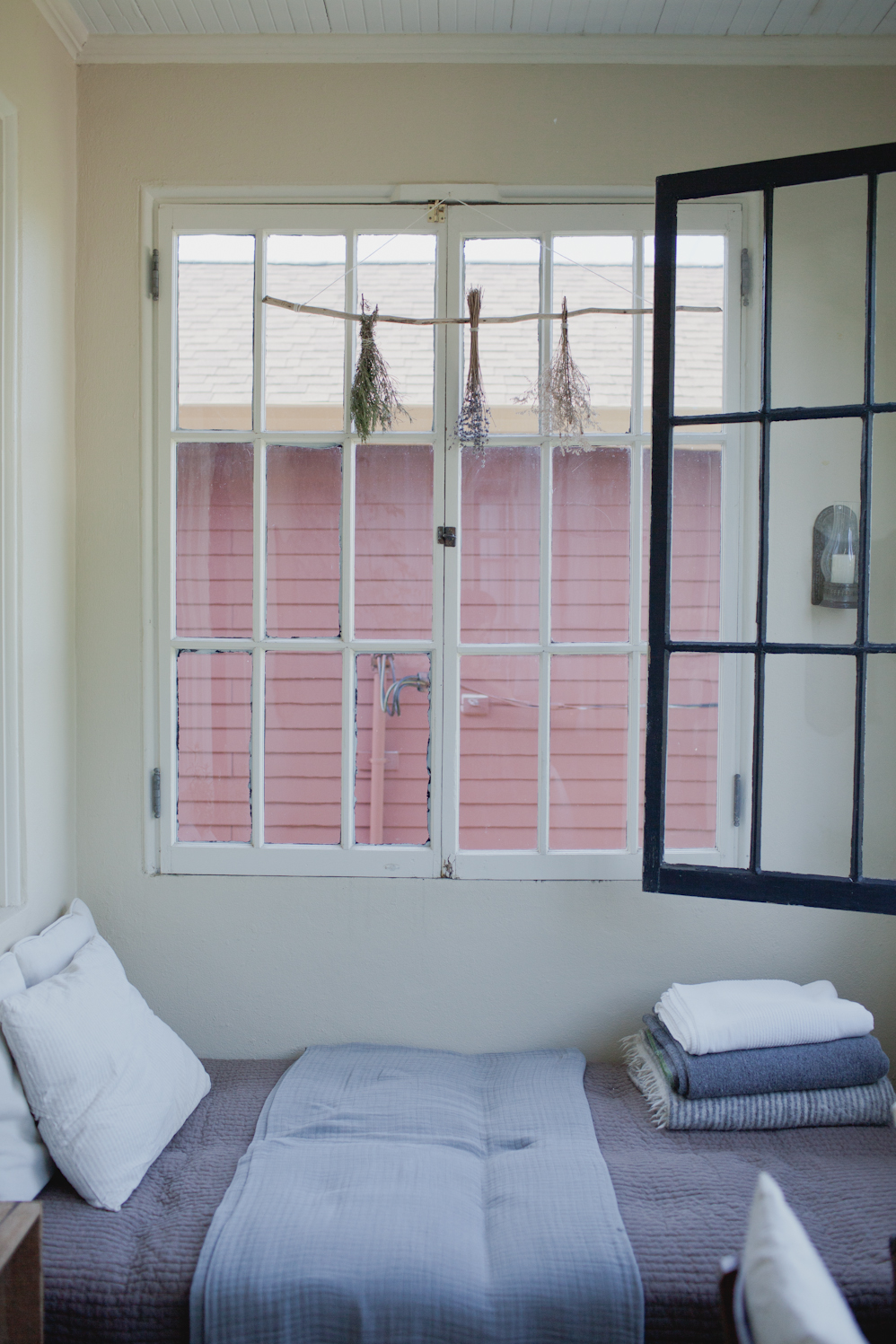







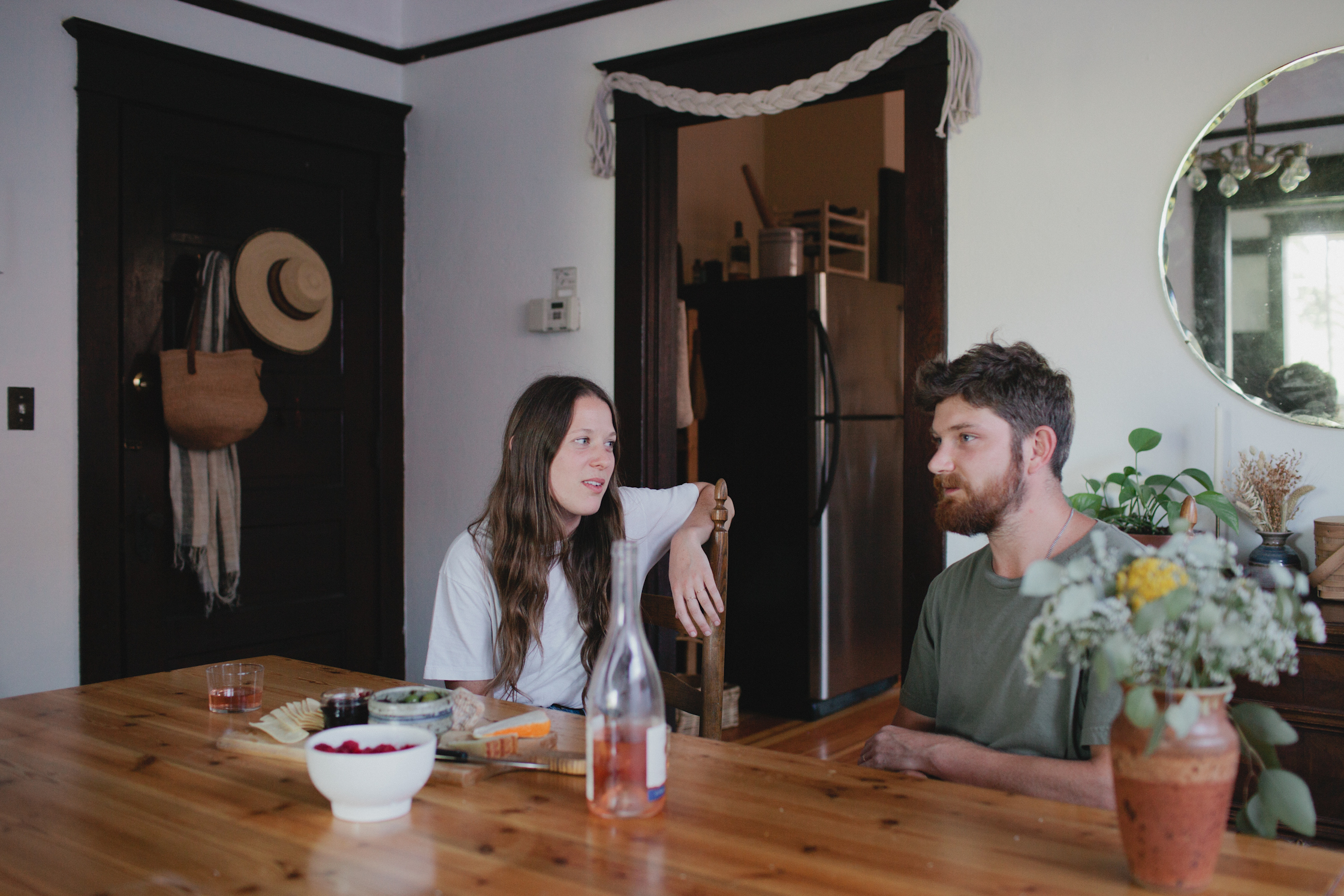











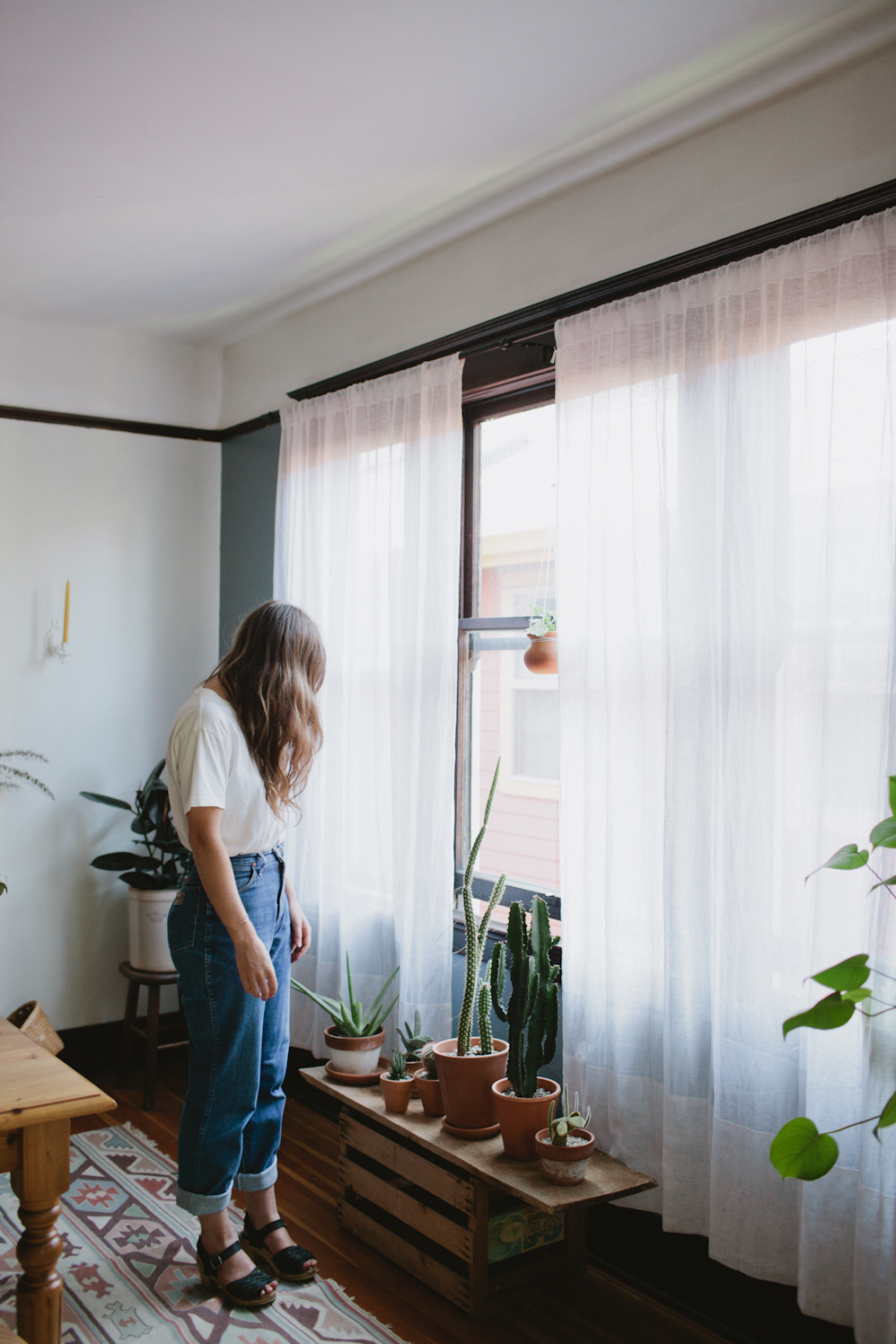

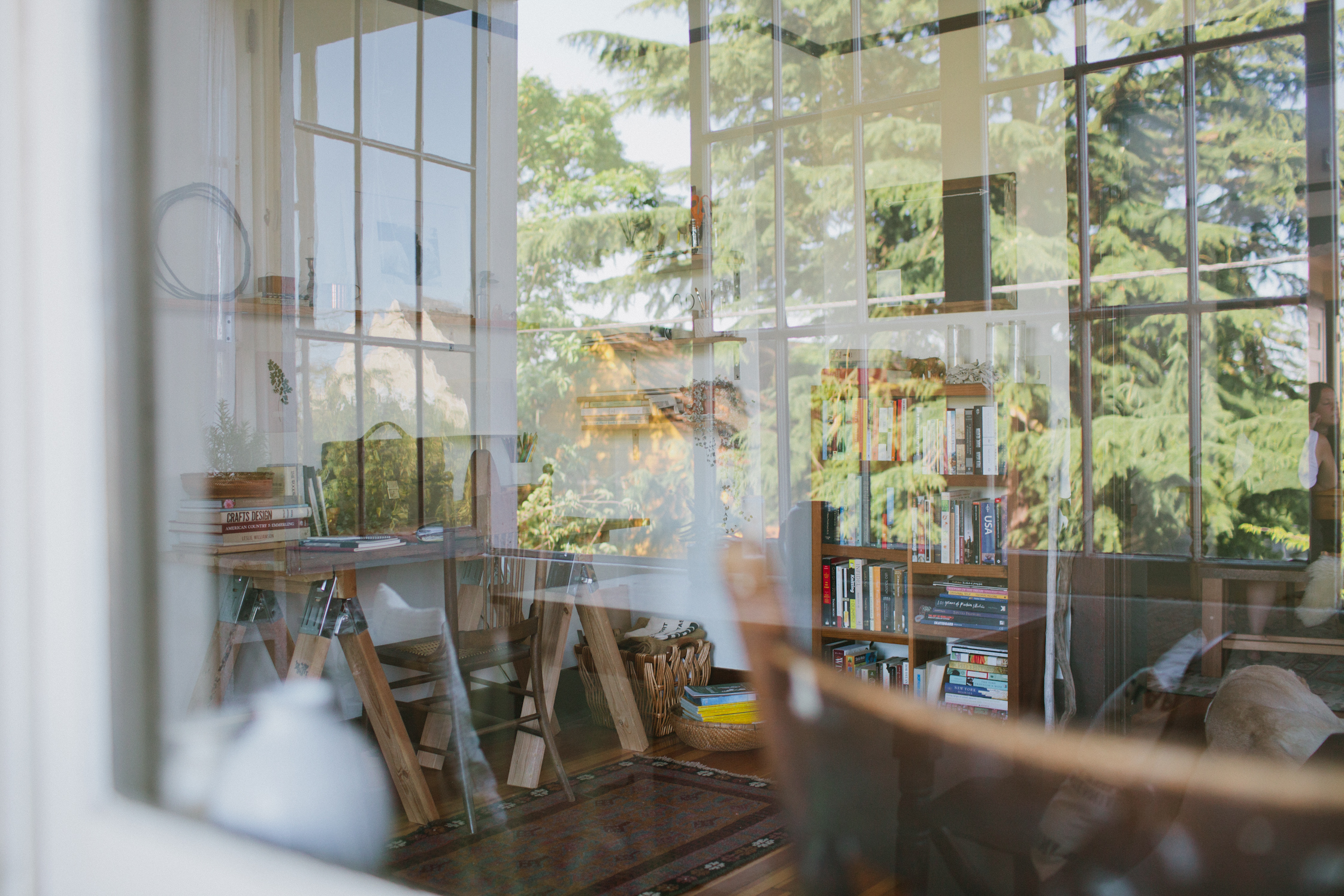


Jen, how did you and John initially meet?
Jen: We had many mutual friends but somehow we hadn’t met before, and one night a good friend of ours was having a gathering at his house. John was the older guy that never showed up to these sorts of things, but he came. Basically the moment we were introduced we had eyes for no one else. From that point on we were together all the time. We were living in Arcata, which is in Northern California on the coast, and when we met we were instantly aligned. We just had so much in common: food, music, and art. It’s been eight years together, but we were married last year.
What were you both doing in Arcata at the time?
Jen: When we first met, John owned a skate shop called Ampt, which still exists today, though he sold it about halfway through our relationship. I was finishing school studying an art degree, and then we moved to Portland last fall. Since then I’ve been focusing on styling, and John’s been focused on The Killing Floor — his skateboard and apparel company — which started a few years ago.
John, can you tell me where the name, The Killing Floor, came from?
John: A lot of people wonder. It’s an old blues song, by Howlin’ Wolf. He’s an old Chicago blues guy. The whole vibe of the company is very blues and music-inspired. I used to play music growing up, and in high school I was in a band with a couple of my good friends. That was a song that we always used to play, so it’s always had held a place in my mind.
What made you decide to settle on Portland?
John: There a lot of reasons. One, we can live in a quiet neighborhood, take our dog for walks, that sort of thing, and feel like we aren’t even in a city. The quality of life is really good here.
Jen: At the same time, we knew we wanted to live somewhere that was big enough and had a strong creative community. In addition, Portland has such a great food scene. We both really love food and sharing meals together has always been important to us, so that’s just an added bonus of living here.
John: Portland is also in such close proximity to nature. We can escape whenever we want, and within less than an hour we can go hiking, camping, or swimming.
You both started your professional careers and creative lives as artists. Do you feel this background has an influence on what you both do today?
Jen: As a stylist, I feel like I’m always taking a visual mess, and editing it down or curating it. I feel the same way with painting and photography. With photography, which was my main focus in school, I was constantly looking through the lens, condensing everything into vignettes, or editing a bigger scene into a single frame. If I’m working on a painting, I have a blank canvas that gives me a lot of options, so I have to choose where to make messes on the canvas and then remove or add. That sensibility has definitely transferred into styling.
John: I’ve made art my whole life. That was always my favorite thing in school when I was growing up. I’ve gone through heavy phases of painting, thinking that I was going to be a painter and just bailing on it over and over. I’ve now created a company where I get to be the total creative director and artist, so it’s actually taught me a lot of art-related things that I didn’t know how to do before. I get to be my own boss and run a business that supports my life, but which is also like one huge art project for me. The fact is, the skateboard brand is really based on the art. Skateboards are what they look like; that’s what sells them in a sense, their aesthetic.
Instead of selling art in galleries you sell it at the skatepark.
John: Yeah. I don’t really like to think about art in that way, that it’s that disposable, but it actually is a disposable art form. I appreciate that it’s not this thing that you have to put on the wall. It’s not like you can’t touch it. It’s something that just comes and goes.
What kind of art or design work usually ends up on your boards? Are there any themes you keep returning to each season?
John: Well, when I originally had the idea to start a skateboard brand, I knew I wanted to try to do something different than what I had been used to seeing on the board walls in shops. I wanted The Killing Floor to have a handmade vibe to it’s artwork. I didn’t want the art to be overly logo-based or super vectorized. I wanted to produce boards that were really interesting to look at, and not just something to throw trucks and wheels on and skate.
The brand is very musically inspired, as well as inspired by my nostalgia for the past, so there’s always been notes of that in it. I have been doing an ongoing series of collage graphics based around musical icons that have been big influences on me over the years. I did a Howlin’ Wolf board, a Miles Davis board, and the last one I did was a Bob Dylan board. That was actually inspired by one Dylan song in particular: Bob Dylan’s 115th Dream.
One previous series was very inspired by the Americana of the West. There was a four board series of hand-drawn old boxcars, and they all connected to make a long freight train when you put them next to each other long ways. That collection also had a board that was inspired by the old “Greetings from California” postcards. I’ve tried to have a loose theme each season that I can mold and stretch in different directions, but that will also carry everything through. I want collections to feel cohesive. I’m always trying to reinvent the brand, while keeping some constant aesthetic that people can identify as The Killing Floor.
What is a typical day like around the house or the studio?
Jen: For me, it depends if I’m working on a job. Since I’m a freelancer there’s pockets of time when I have more spare time, or stretches of days where I’m busy working. When I do have extra time I’ll work on stuff for John, occasionally acting as a soundboard for product design and art direction for The Killing Floor. We try to have lunch together most days of the week, which is really nice. I think that’s one of the benefits of working for yourself.
John: A normal workday for me is: wake up around eightish, make coffee. That always comes first. Jen and I love a good cup. Then I head down to my office and check my email. Throughout the day I could be doing any number of things from correspondence with accounts, to working on artwork or media stuff for the brand. We always try to make time to have lunch together. A lot of people think owning your own company means you can do whatever you want. I suppose it does in some ways, but a lot of the time it actually feels like I’m on the job 24 hours a day. There’s always something to do, so it’s important to try to allocate my time since I’m not punching a time card from nine to five. Many a late night has been spent creating artwork for the brand. I like to make a lot of my art and graphics in the evenings. I think I feel the most in my creative zone then.
Have you two ever collaborated on a creative project outside of The Killing Floor?
John: We’re bouncing things off one another every day in a hundred different ways. We’ve vaguely thought in the past a few times about doing an art show together.
Jen: Or a store together someday. We do collaborate on house projects, and other small things that we make together.
John: Usually the way that goes is that Jen comes up with the idea for something, and then I fine-tune the idea so that it works right. Then we build it together.
Jen: We also made a lot of stuff for our wedding, like the tables and benches and salt and pepper holders. Once the wedding was over, we had a surplus of wood, so we made our bed frame, and a lot of other things together, like bookshelves, record shelves.
You mentioned perhaps one day having a shop together. What would your ideal space or shop entail as a collaborative project between the two of you?
John: Oh man, we love dreaming about that. I think our ideal shop would have a small, curated collection of art books and other objects. Maybe a few skateboards hanging on the wall, too.
Jen: Yes, absolutely. And recently we’ve discussed the idea of offering something else, like coffee, in the space. It would be really fun to source an old vintage espresso machine. Ideally, we’d both like to provide a space for other creatives to just come and hang out. Have a cup of coffee or thumb through a book. Strike up a conversation. Maybe we could have something behind the shop, like a courtyard or garden, where people could be outside, too. We’ll see. I think we’d both love collaborating on something like that together.
So when you get the chance to go on a weekend escape, where do you guys like to go?
John: We try to camp and get outdoors as much as we can.
Jen: We love to go east, because Oregon is so amazing in that it will be forest and super green and lush, and then all of a sudden it will be desert, and juniper brush and sage. We love that landscape, and there’s so many rivers, and the Columbia Gorge. Anything that we do, like camping or exploring, is really just a couple of hours away in Oregon.
Can you show us some of your favorite pieces around the house that hold a special memory, or are simply meaningful to you?
Jen: I’m kind of a crazy plant lady, I have so many plants. They’re probably some of our most prized possessions. Also there are so many pieces of furniture that John and I have made together. They’re all very meaningful to me.
John: We also love our record collection. It’s kind of the center of the house in a lot of ways as we don’t have a television.
Jen: We really like old music, mostly from the 60s and 70s. Most of our records have been collected together as we’ve been together so long. That’s another kind of collaboration between us.
John: Hopefully one day we’ll have 20 times that amount. I want that much music in my life!
John, could you share a bit about your tattoos?
John: I grew up in Athens, Georgia, right outside of Atlanta, and that was a pretty unique time in my life. In a lot of ways it molded me into who I am. I think that’s why I’m a skateboarder, among other things, and I think that’s also why I’m an artist. It had a big impression on me. I was actually born in Illinois but Georgia was always my home ground, and I wanted to get a tattoo that symbolized that. A few years ago I decided I wanted to get a peach, and I finally just got it recently. That’s like my ode to the South.
My heart is for my dad because he passed away not long ago from a heart attack, kind of out of the blue. I just knew right after that happened that I wanted to do something that I could have with me for the rest of my life. It wasn’t like a photo, or something that could easily get lost. It’s on my forearm so it’s like I wear my heart on my sleeve, which is how I always saw him. He wore his heart on his sleeve.
What serves as your inspiration from day to day?
John: I’ve always had a thing with 50s and 60s Abstract Expressionist painters. For some reason I’ve always loved Jasper Johns. Jen and I both also love anything by Willem De Kooning and Robert Rauschenburg. I’m inspired by old signage, old Americana, definitely old record covers. I like those kinds of artists a lot because they are really unsung. It’s common man art.
Jen, What was the last thing you saw that really inspired you?
Jen: Every time I travel somewhere, I come back incredibly inspired. A new experience on the road or exploring a new place can stir a lot up a lot of fresh ideas and creativity. There’s something about being out of my comfort zone and usual routine that forces me to be hyper-aware of my surroundings. I always return home more focused and present in my daily life.
Do you recognize coming up in your personal work?
Jen: I’ve always been a rather nostalgic person; both my work and lifestyle reflect that. I think a lot about preservation, how things get passed down from one generation to the next. Most of what I collect around my home, and what is most valuable to me, are objects that have either been given to me by mother or grandmother, found at thrift stores and antique stores, or made by John and I. I’m really excited about the idea of taking something that’s old, or has been cast aside by someone else, and giving it a new life and meaning.
A lot of the work I’ve made has been centered on that concept. For example, with a collage or painting, I tend to incorporate a lot of old photographs and discarded materials. When John and I make a piece of furniture together, it’s usually out of reclaimed wood. Even when I’m styling or curating a space, I gravitate towards objects that are worn and tell a story — whether it’s a vintage blanket or a thrifted ceramic cup.
Do you have a favorite local cafe or shop?
Jen: On a Saturday we drink our coffee in the sunroom in the summer, and then we go for a little jaunt not too far down the road to Sweedeedee. It’s one of our favorite little neighborhood cafes, which we always go to for breakfast or brunch. The reason we go back is that it’s unfussy and they use local ingredients. As for shops, I think Lowell is pretty great; I really like the way the store is curated.
John: I think Beam and Anchor is nice because it’s not only a shop, but also has an upstairs collaborative workshop. I’d love that kind of space to just break and build stuff. That’s one thing we don’t really have right now, a workshop or a space where we can just get messy.
What are you most excited about right now, and what’s next?
John: As we recently got married I think more than anything I’m really excited about just digging into being a family now. We get to think about all the other aspects of that, like having kids a little later, buying houses, all those things. I’m also super excited about my company. I feel like it’s got to a point where it keeps me very busy and focused, and gives me a lot to think about and look forward to every day. It’s almost like this machine that I have to keep up with, which is amazing because it forces me to be creative and to be thinking of new ideas for things all the time. It’s a win-win, because my job is two things that I really love. I’m excited to see what happens with it.
Jen: I’m excited for future projects I have coming up with friends. I’m really excited about our life together, because I think it’s the force that moves everything forward. I’ve also recently begun collaging and weaving and doing some independent creative projects, and I’m looking forward to reworking that into my daily schedule and seeing where it takes me.
Jen and John, thanks so much for inviting us into your peaceful home, and revealing a bit of your daily creative life and routines with us. To find out more about John’s skateboard company view the website here. Find out about Jen’s work on her website.
Photography: Carissa & Andrew Gallo
Interview & Text: Julie Pointer
